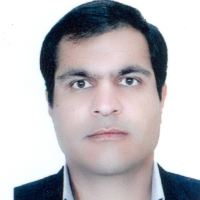Typology of pottery added to Qayen Mountain Castle
In the Esmaeili forts, although the living conditions were not very favorable and most of the time they went to war and conflict and defended them against the central power, but nevertheless, all kinds of arts, especially pottery, maintained their artistic degree and prestige. The fifth to seventh centuries, which coincided with the rise of the Seljuks and then the Khwarezmshahs, reached its peak. In the field of pottery, in addition to new styles in production, technique and decoration, the heritage of the past was used and not forgotten. In this article, the pottery of the added role of Qayen Mountain Castle, which is located 2.5 km southeast of Qayen city, is studied. This fort is one of the famous forts in Qohestan region (South Khorasan), which is important during the Islamic era, especially at the same time as the Esmaeili gained power in this region and its location is in an important communication area that extends from north Khorasan to south Khorasan. The pottery of the Islamic period obtained from this castle belongs to the Middle Ages (Seljuk) to the late Islamic (Safavid), however, most of the pottery belongs to the Islamic Middle Ages (fifth to eighth centuries), which in terms of decoration They are divided into glazed and unglazed groups. Among unglazed pottery, pottery with added role has a lot of abundance and variety. In fact, the importance of this type of pottery in the area of Qayen Mountain Castle, compared to other contemporary castles in the region, has caused this issue to be addressed. Pottery shows the connection between Iranian art over time. In examining the pottery motifs of Qaen Mountain Castle, these questions are: 1- What is the most important reason for attributing pottery with the added role of Qaen Mountain Castle to the Islamic Middle Ages (especially the Seljuk and Khwarezmshahi periods)? 2- What are the unique features of the added pottery patterns of Qayen Mountain Castle and can a special classification be considered for these motifs? Considering that few studies have been done in this regard so far, so this article tries to identify and classify the role of stamp additives in the pottery of Qayen Mountain, in a descriptive-analytical method with a comparative approach and based on objective observations andExamining the samples obtained during the demolition of Qayen Mountain Castle from 2006 to 2009 (about 3000 pieces) will give a logical answer to this question. The results show a very wide variety of motifs, dimensions and placement of the role of additives in the pottery of Qayen Mountain Castle, which can be combined with human designs of animal, plant and other phenomena. Features include sun, stars, crosses and geometric patterns. These decorations are mostly used to decorate the upper part of the body of pottery, and most of the motifs used in these samples are grooved (strip) geometric patterns on the body of the pottery and combine them with added patterns in a simple or combined form inThey are arranged and arranged together.
- حق عضویت دریافتی صرف حمایت از نشریات عضو و نگهداری، تکمیل و توسعه مگیران میشود.
- پرداخت حق اشتراک و دانلود مقالات اجازه بازنشر آن در سایر رسانههای چاپی و دیجیتال را به کاربر نمیدهد.



